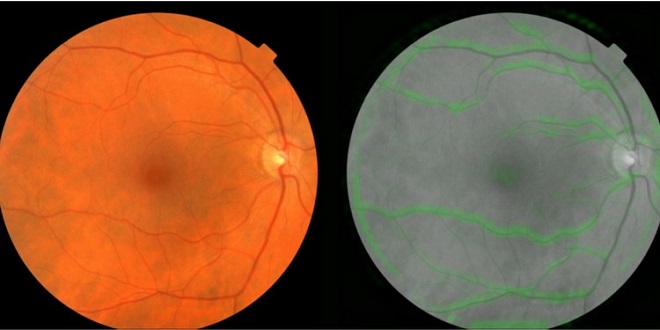Google’s New Algorithm Can Predict Cardiovascular Risks by Scanning Eyes
Google AI can predict heart disease or attack risks simply by scanning your eyes to work out your blood pressure, age and smoking habits
A new study by Google and its health-focused Alphabet-sibling, Verily Life Sciences, has shown that deep-learning algorithms (a new robot) can accurately predict heart disease by analyzing photographs of an individual’s retina.
Google’s AI has made a breakthrough by successfully predicting cardiovascular problems such as heart attacks by analyzing scans of the retina. This is a huge step forward considering the fact that Google’s AI has found new ways to analyze existing medical data.
Prediction of cardiovascular risk factors from retinal fundus photographs via deep learning
Scientists from the firms detail their findings in a new paper published in Nature Biomedical Engineering: ‘The retinal fundus image includes blood vessels of the eye, which the paper shows can be used to accurately predict cardiovascular risk factors, including whether a person is a smoker, blood pressure, age, gender, and whether a person has had a heart attack. The algorithm was also able to infer a person’s ethnicity, which is also a factor in cardiovascular-related disease.Prediction of cardiovascular risk factors from retinal fundus photographs via deep learning’.
See Also: Glowing Plants With Firefly Enzyme: The Future of Streetlights
The retinal fundus image includes blood vessels of the eye, which the paper shows can be used to accurately predict cardiovascular risk factors, including whether a person is a smoker, blood pressure, age, gender, and whether a person has had a heart attack. The machine analyses scan of the back of eyes to accurately infer a person’s ethnicity, which is also a factor in cardiovascular-related disease.
“Using deep-learning algorithms trained on data from 284,335 patients, we were able to predict cardiovascular risk factors from retinal images with surprisingly high accuracy for patients from two independent datasets of 12,026 and 999 patients,” writes Google Brain Team product manager Lily Peng.
As the paper points out, there are other ways of assessing cardiovascular risk from a patient’s history and blood samples, but sometimes key information is missing, such as cholesterol levels.
The retinal image scans could offer a quick, cheap and non-invasive way of generating signals for heart disease.
Given that the algorithm could accurately predict risk factors, the scientists also trained the algorithm to predict the onset of a major cardiovascular event, such as a heart attack within five years with a 70 percent accuracy rate.
“Our algorithm could pick out the patient who had the CV event 70 percent of the time. This performance approaches the accuracy of other CV risk calculators that require a blood draw to measure cholesterol,” wrote Peng.
The researchers also used attention maps to look at how the algorithm was making its predictions, such as whether it was focusing on blood vessels to predict age, smoking status, and blood pressure.
As Peng notes, opening the black box to explain how predictions are made should give doctors more confidence in the algorithm.
Verily’s head of cardiovascular health innovations, Michael McConnell, said it is promising but early research.
“More work must be done to develop and validate these findings on larger patient cohorts before this can arrive in a clinical setting,” he notes.
However, if further studies do validate the findings, the use of retinal images could lower the barrier to doctors discussing preventative measures with a patient.
Patients with a high blood pressure or who smoke are more likely to have weaker, thinner and damaged vessels than young and healthy individuals.
Study co-author Dr. Michael McConnell, a medical researcher at Verily, said: ‘Cardiovascular disease is the leading cause of death globally.
“There’s a strong body of research that helps us understand what puts people at risk: Daily behaviors including exercise and diet in combination with genetic factors, age, ethnicity, and biological sex all contribute.
“However, we don’t precisely know in a particular individual how these factors add up, so in some patients, we may perform sophisticated tests … to help better stratify an individual’s risk for having a cardiovascular event such as a heart attack or stroke.
“This paper demonstrates that deep learning applied to a retinal fundus image, a photograph that includes the blood vessels of the eye, can frequently predict these risk factors – from smoking status to blood pressure – as well as predict the occurrence of a future major cardiovascular event on par with current measures.’
Sources:
- http://www.zdnet.com
- http://www.dailymail.co.uk
- https://www.techradar.com


The future is here … ???!!! Not yet it is just the beginning of AI.